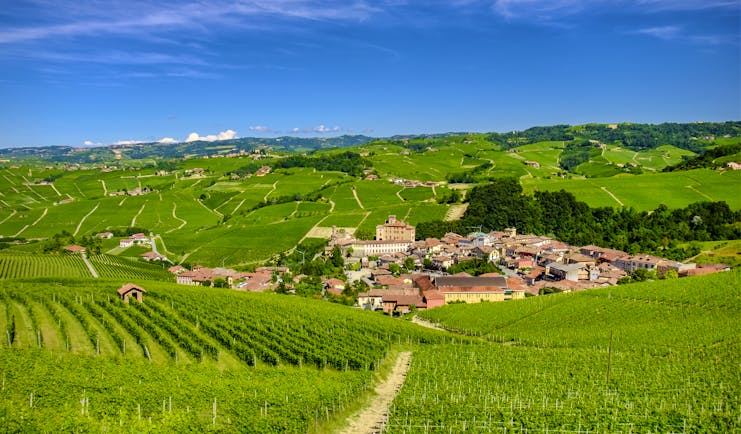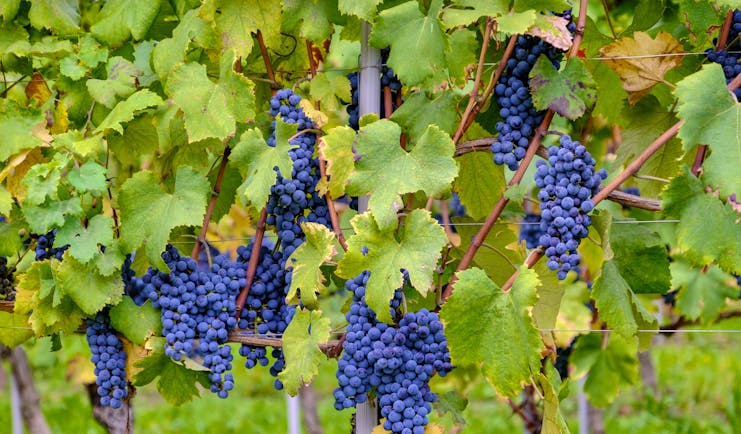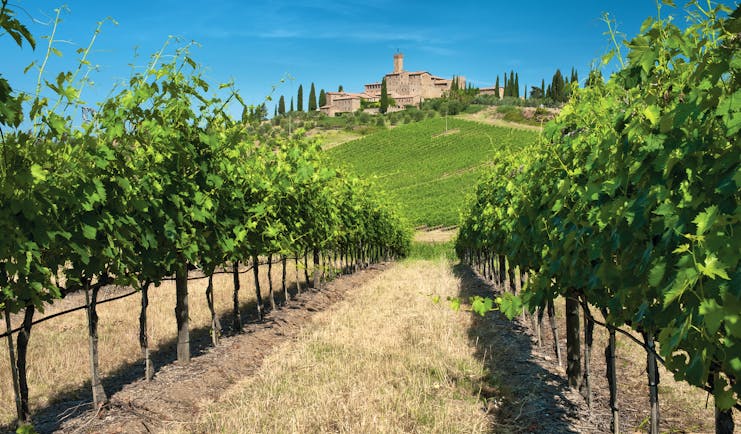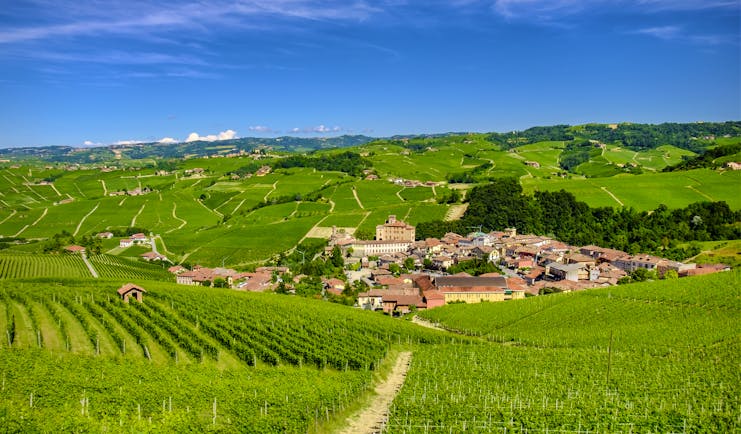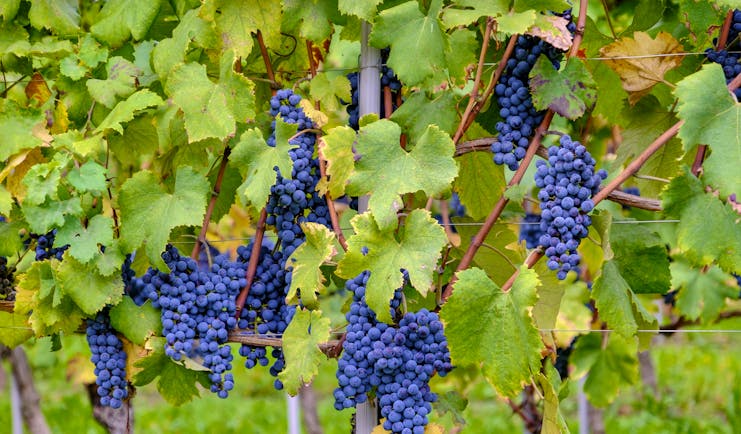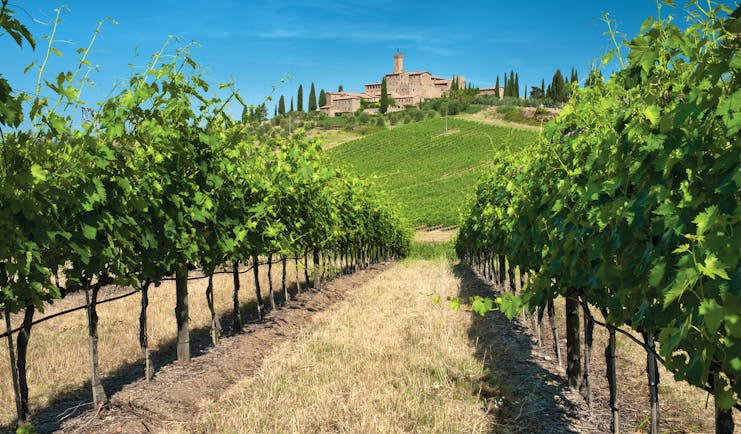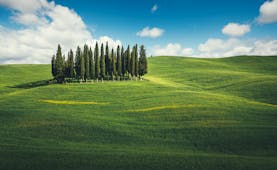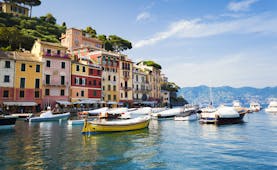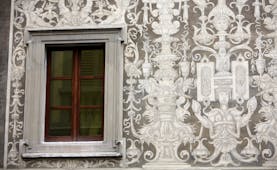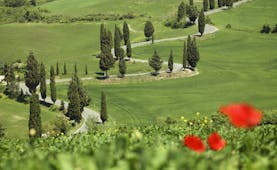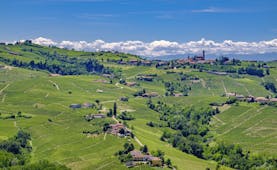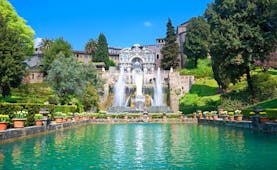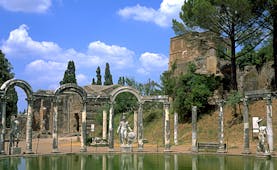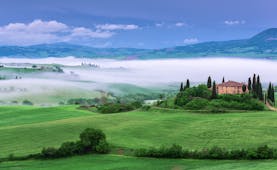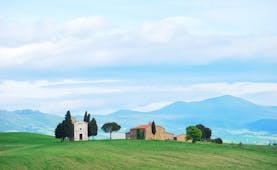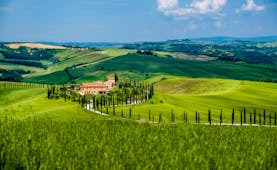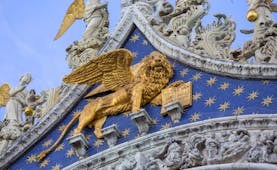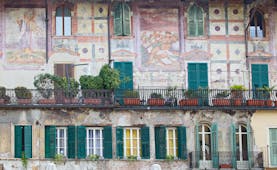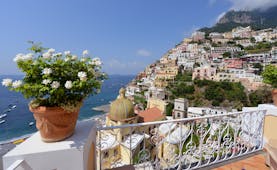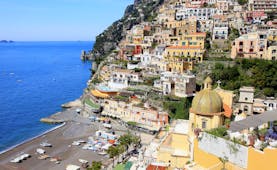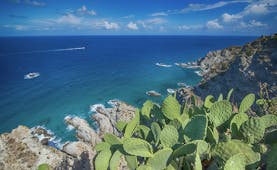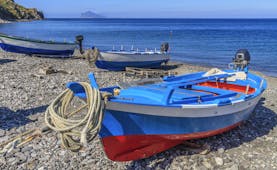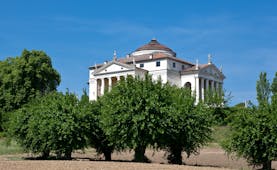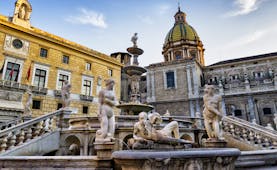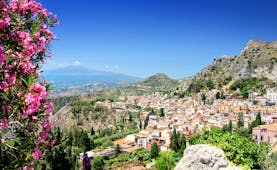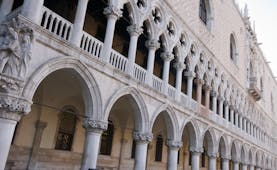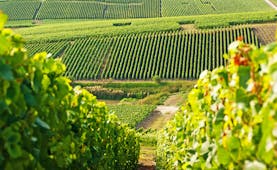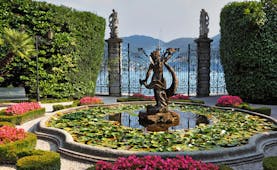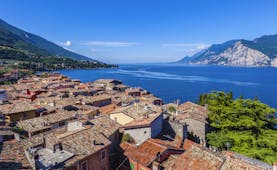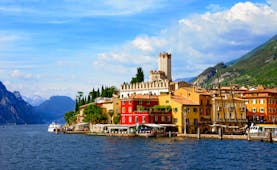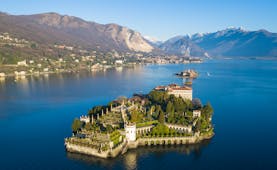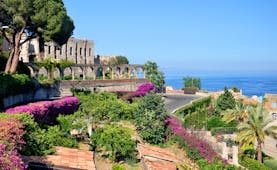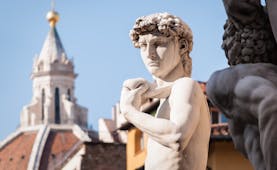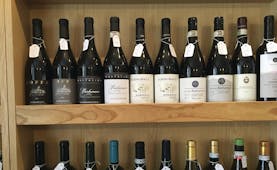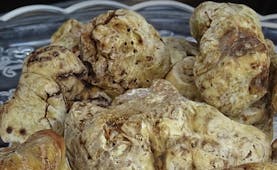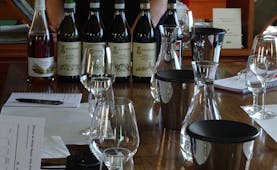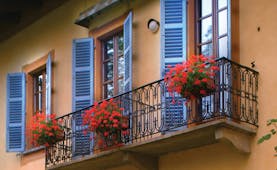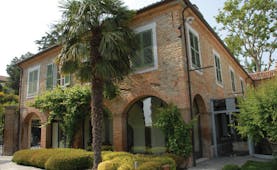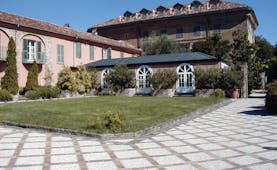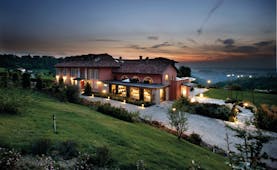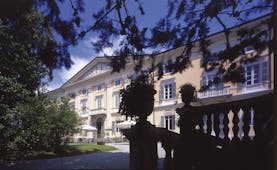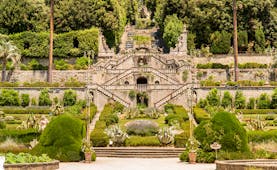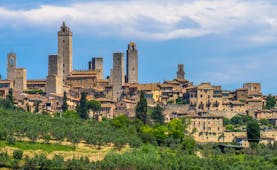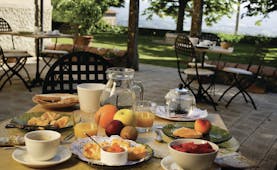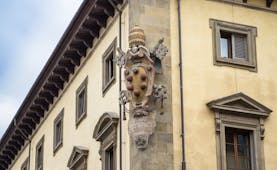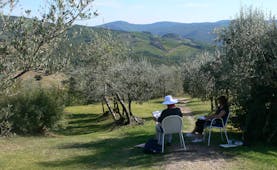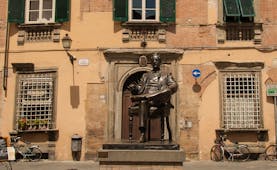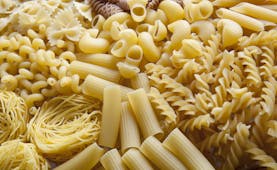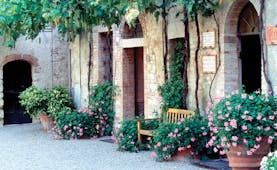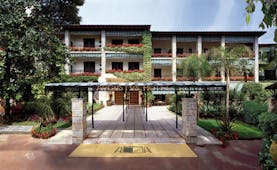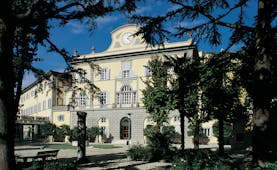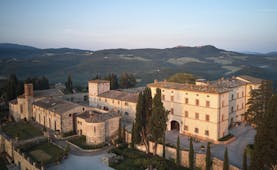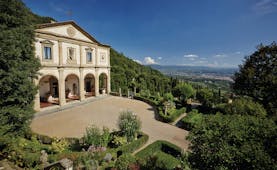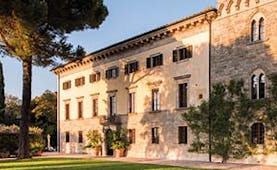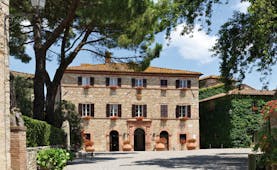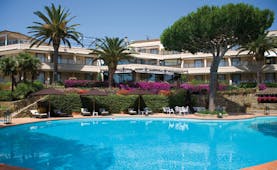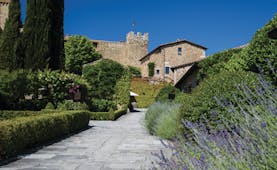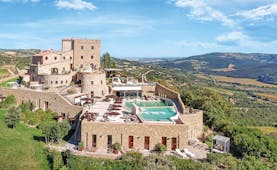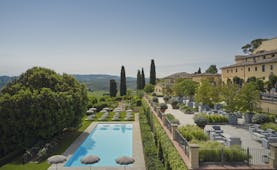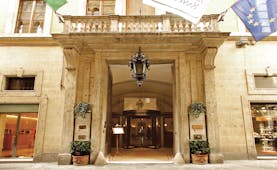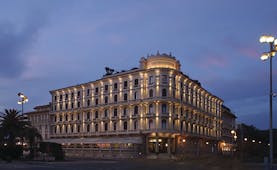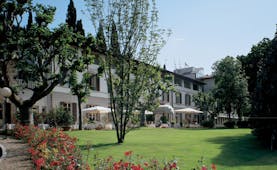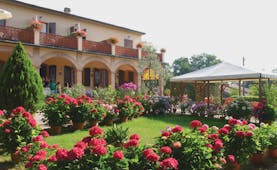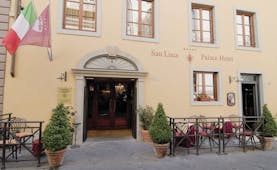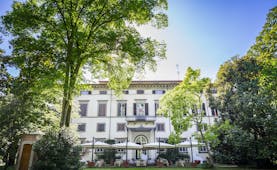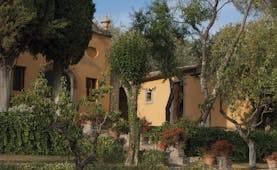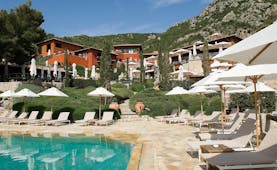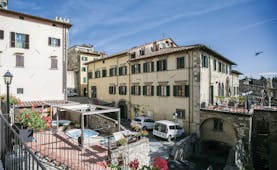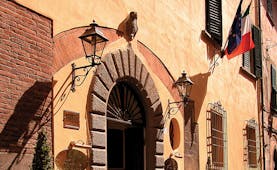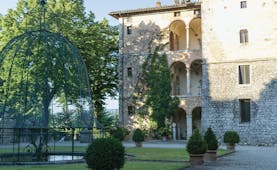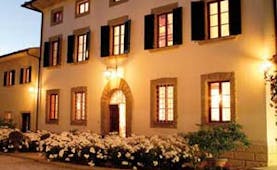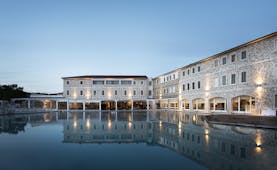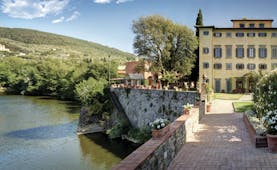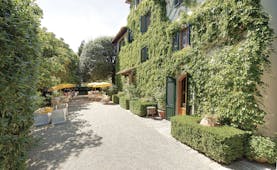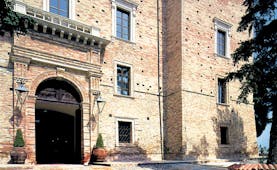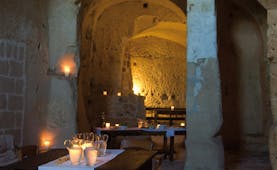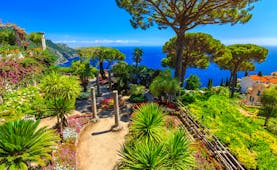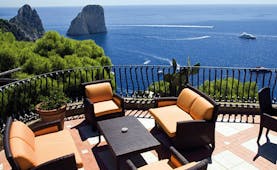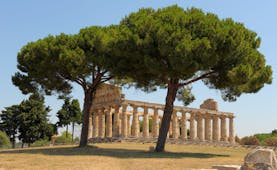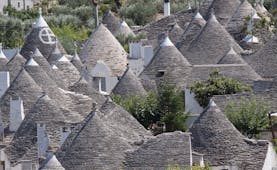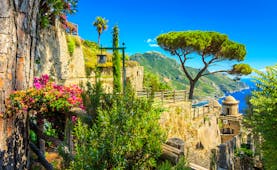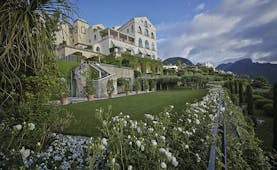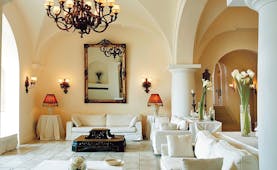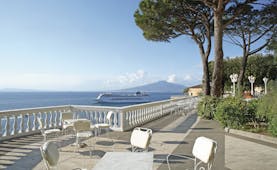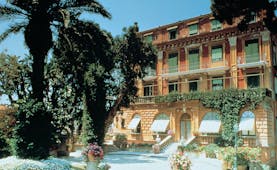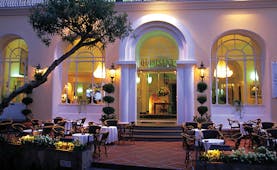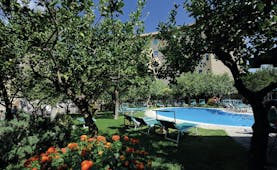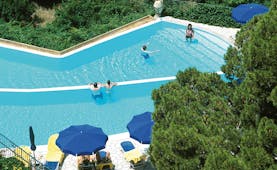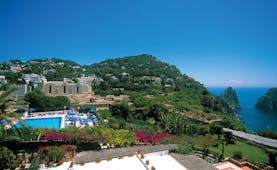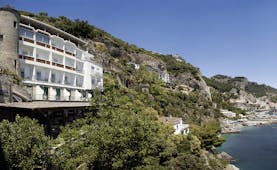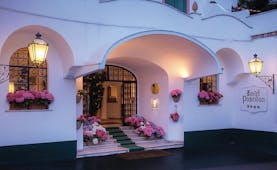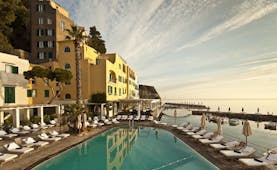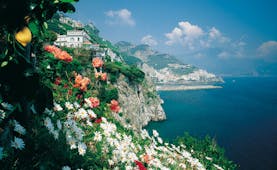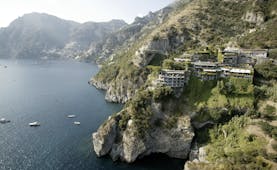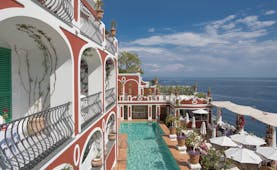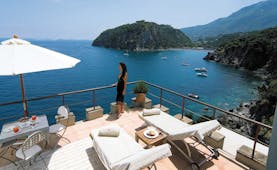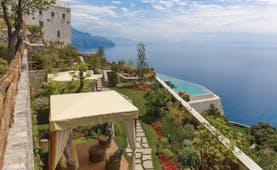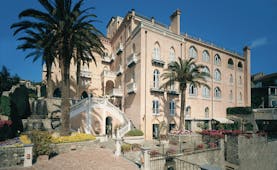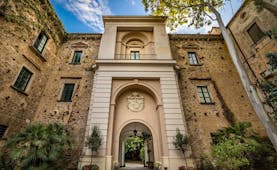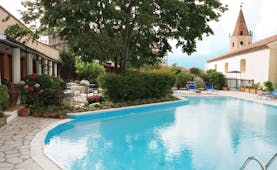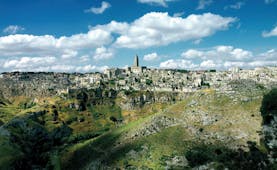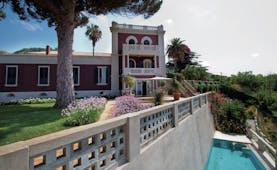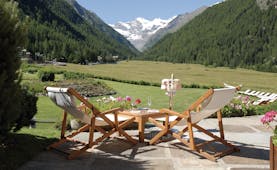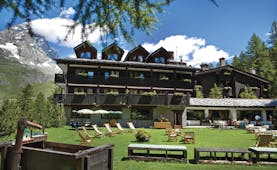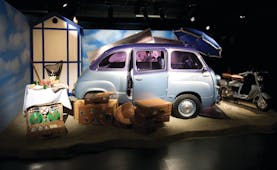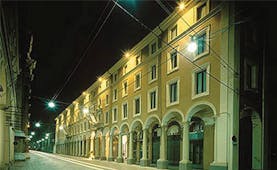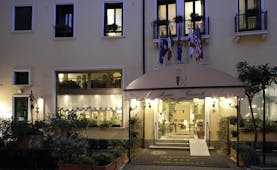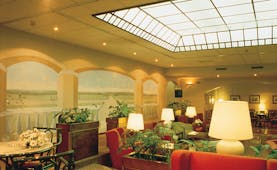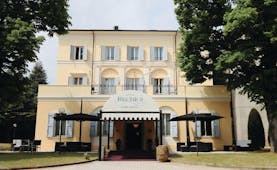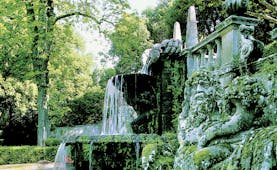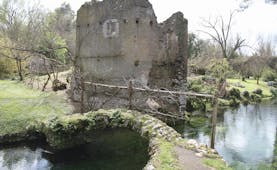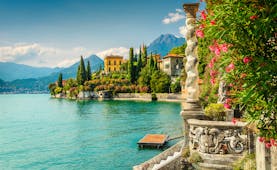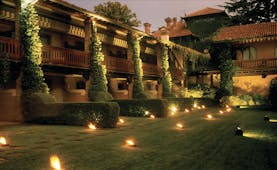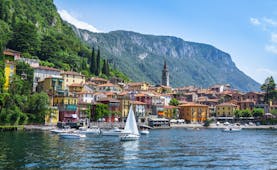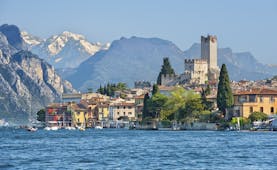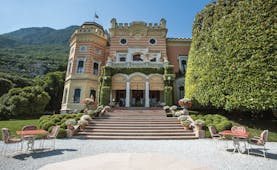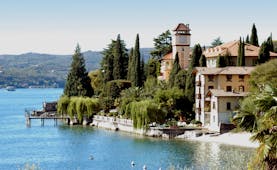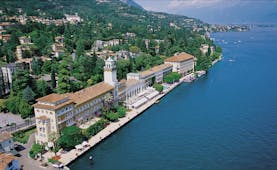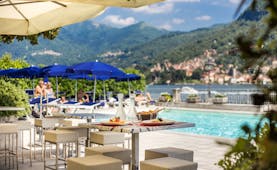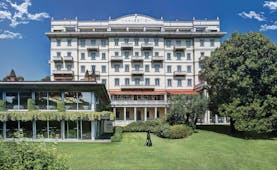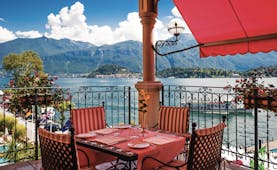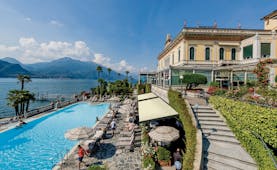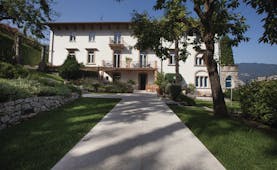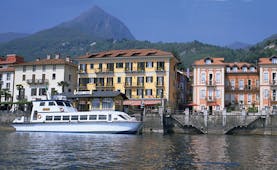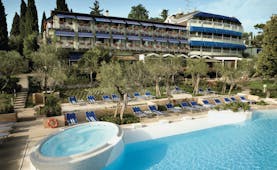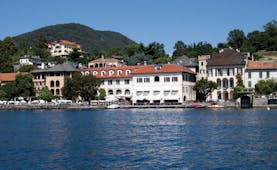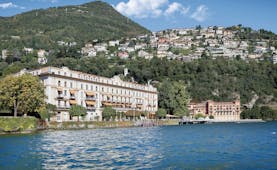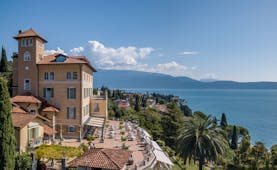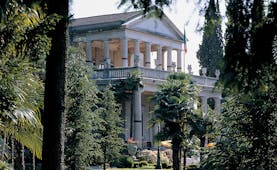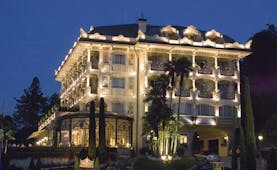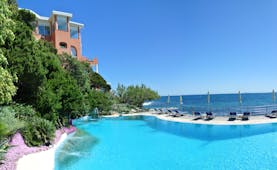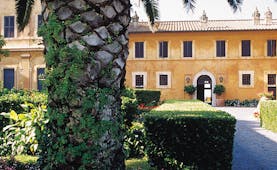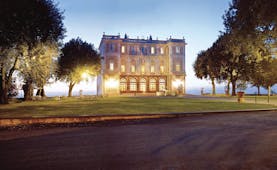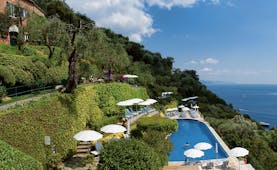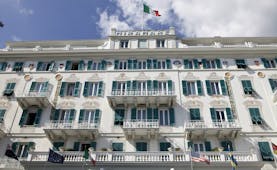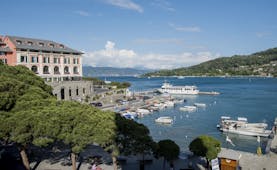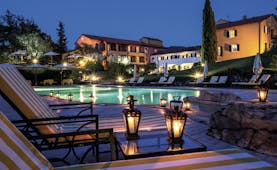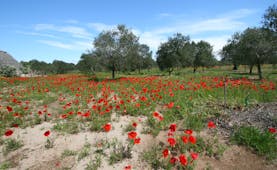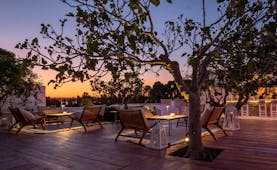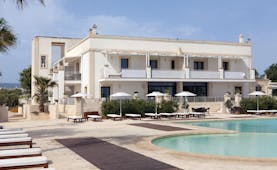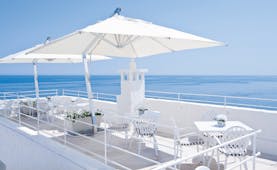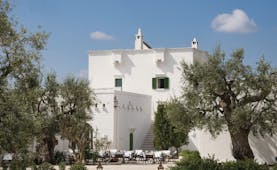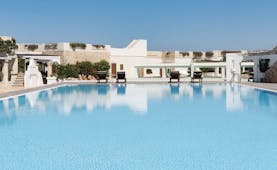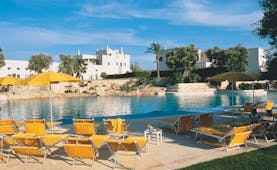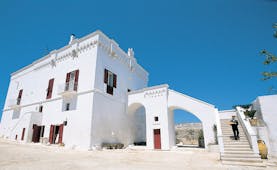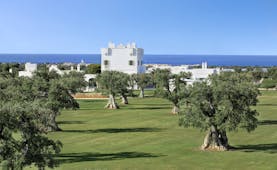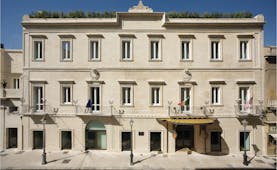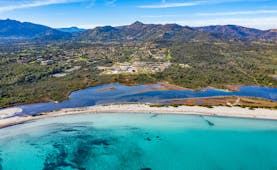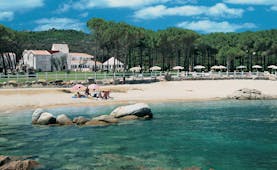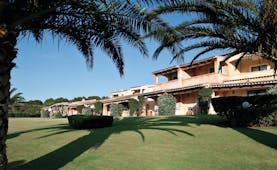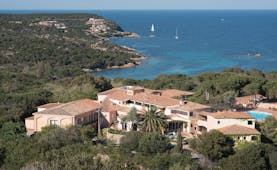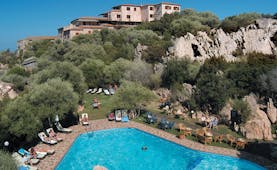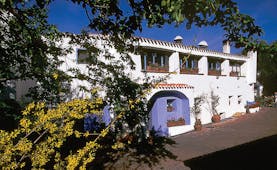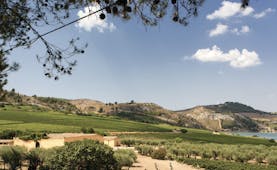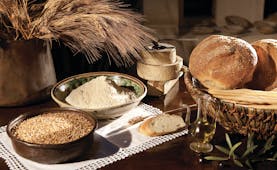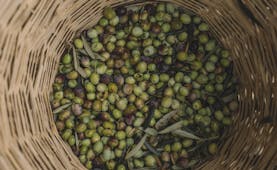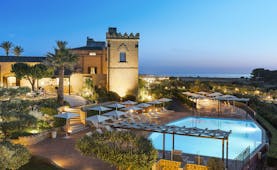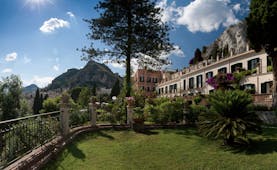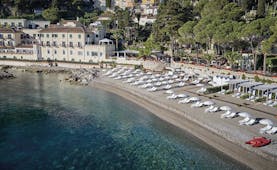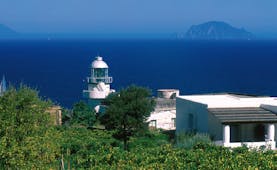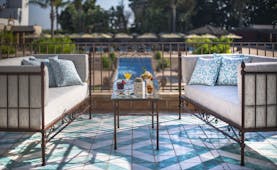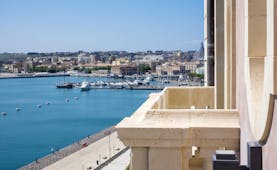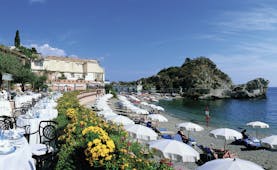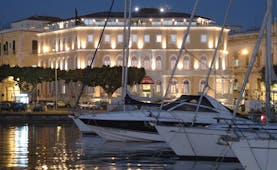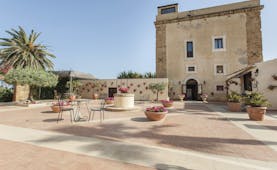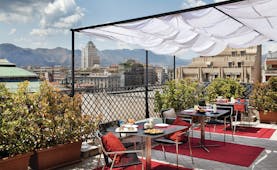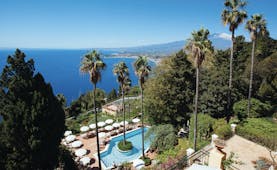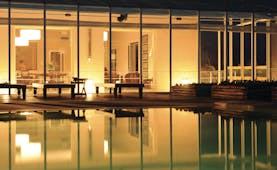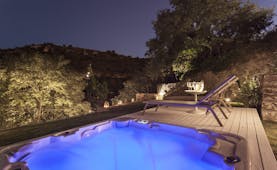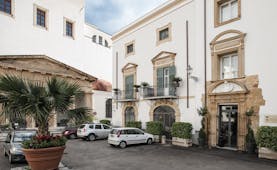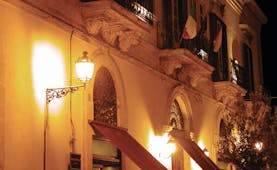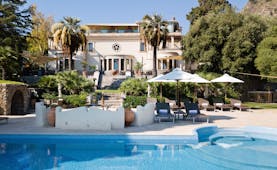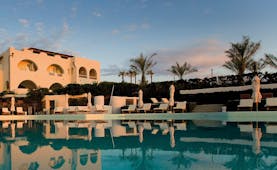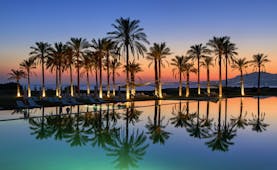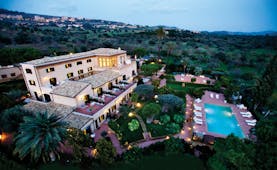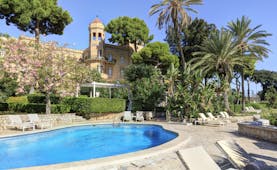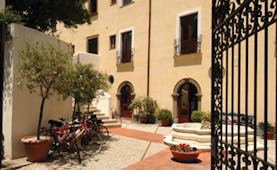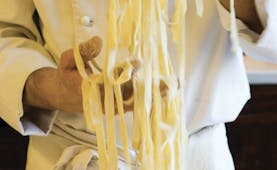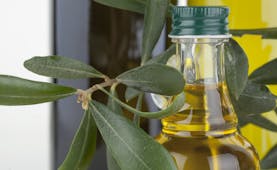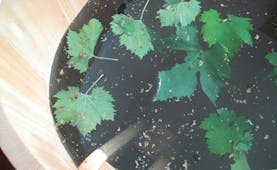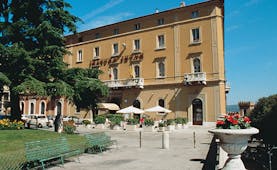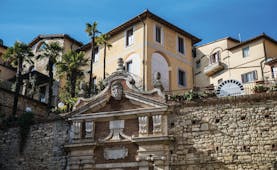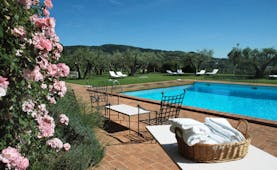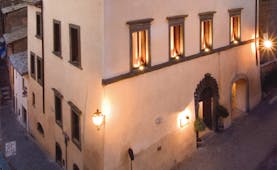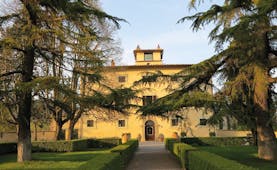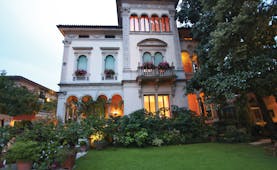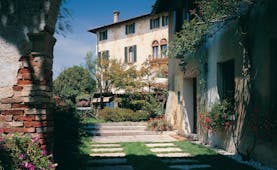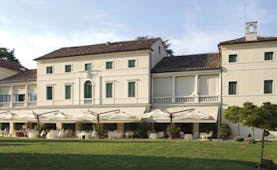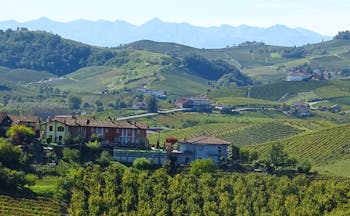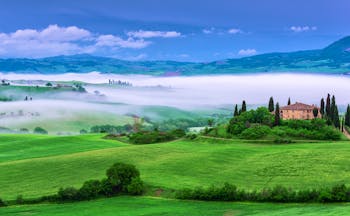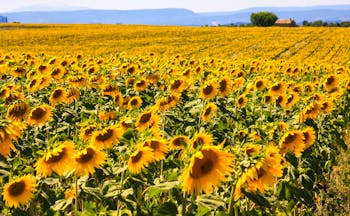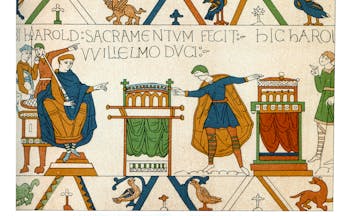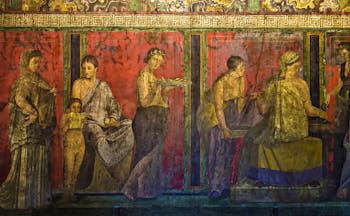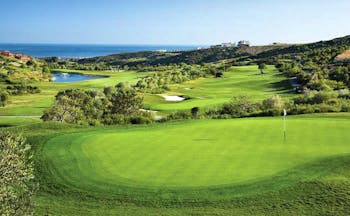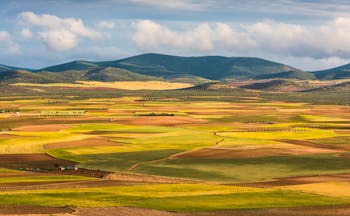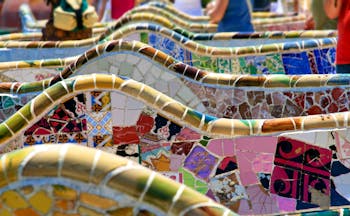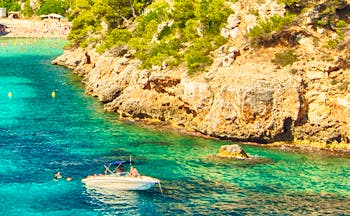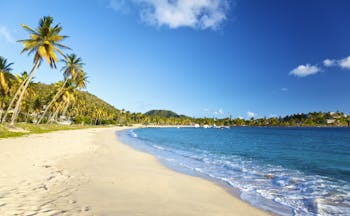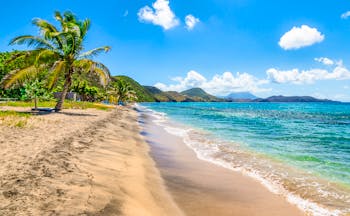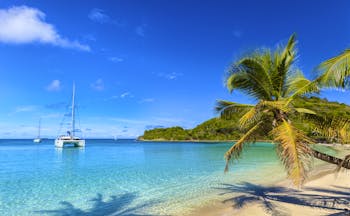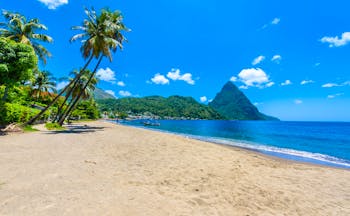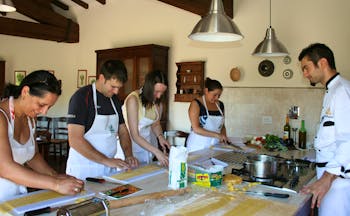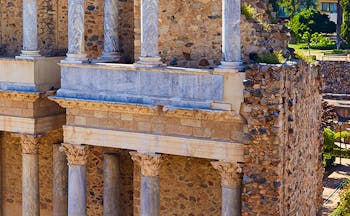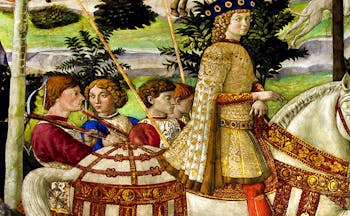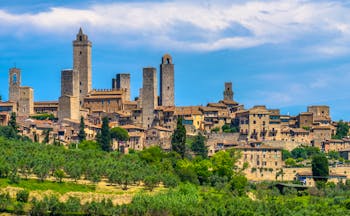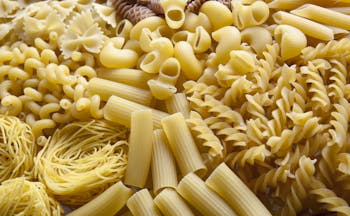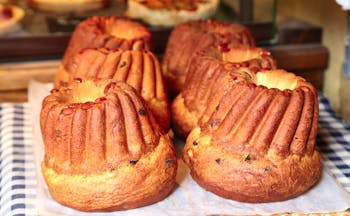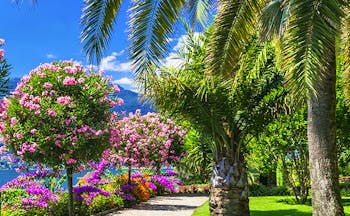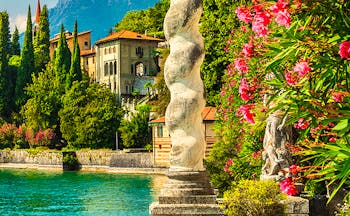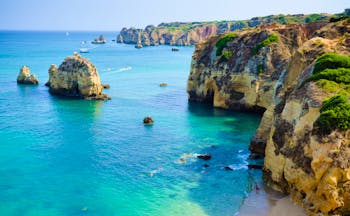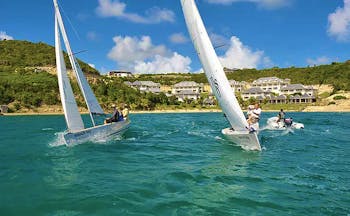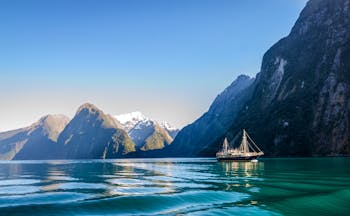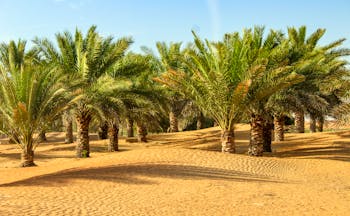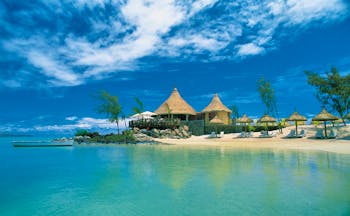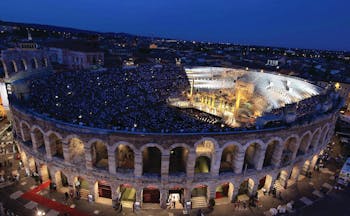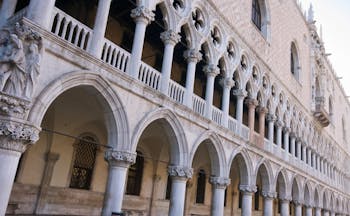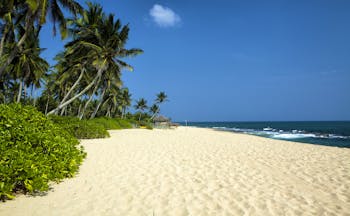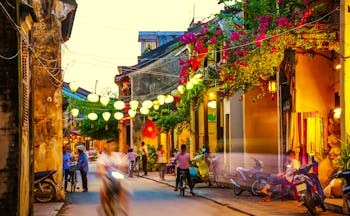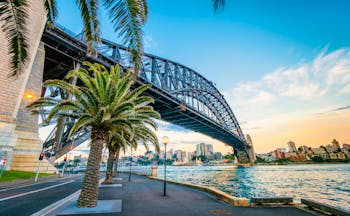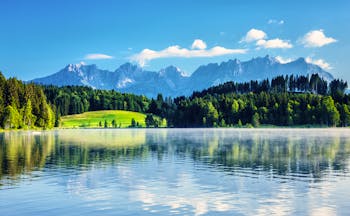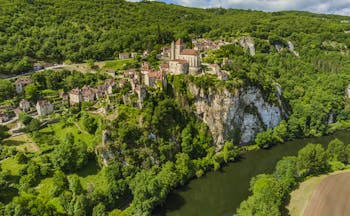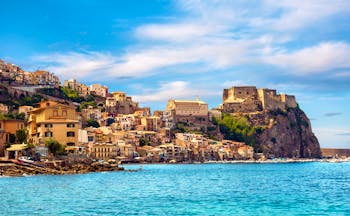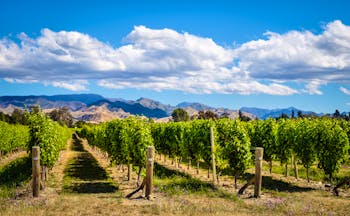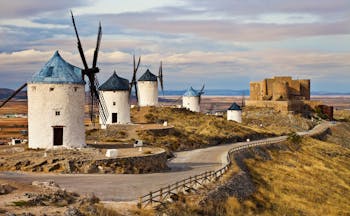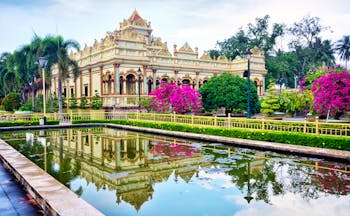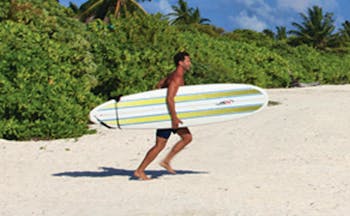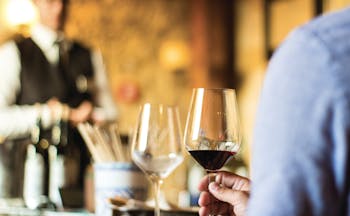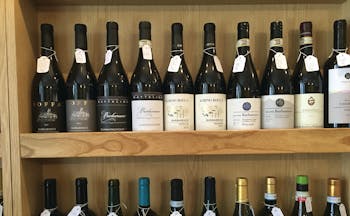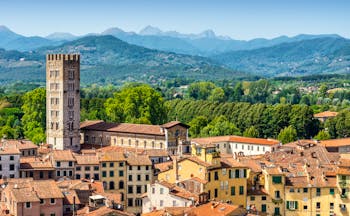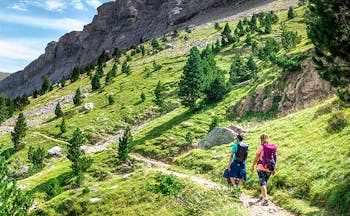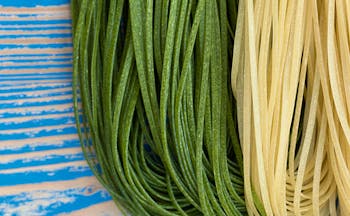Vineyards of Barolo and Brunello luxury Italian fly-drive holiday
Begin this 8-night fly-drive touring holiday in Turin, where you collect your hire-car for the agreeable drive south into the wine country of Piemonte. You stay in the village of Benevello in Piemonte, a short distance from the city of Alba, and the hilltop wine villages of La Morra, Barolo, and Monforte d’Alba. Your first hotel is the magenta Relais Villa d’Amelia, surrounded by hazelnut groves. Spend three days exploring the fertile hills of Le Langhe, its steep hillsides packed with vines into the distance, and sampling some of Italy’s finest red wines, Barolo included. Small villages cluster around the peaks of these hills, each with their own quaint castles that speak back to medieval Italy. The journey between these two wine-producing regions takes you first through Asti, past its austere cathedral, then passing Alessandria, and its magnificent central citadel and surrounding flower-shaped gardens. You meet the Ligurian Coast at Genoa, where you might wish to stop off to buy some of the famous Genoan lace, and then continue along the Ligurian Riviera passing the Cinque Terre until you reach the Tuscan coast. The Castello Banfi il Borgo, your second hotel, sits just outside Montalcino, the home of Brunello di Montalcino. Spend your time exploring the legacy of the Brunello, or ‘little dark grape’, and the picturesque, historic Tuscan villages. Navigate the winding streets of stone houses with terracotta roofs, browse in the antique and ceramics shops and taste local delicacies. Nearby are Pienza and Montepulciano.
Highlights
Turin • Piemonte • Alba • Asti • Barolo • Barbaresco • Grinzane di Cavour • Truffle-hunting • Vineyard visits in Barolo and Montalcino • Montalcino • Pienza • Montepulciano
Day by day
Upon arrival in Turin, collect your hire-car and drive south into the Piemonte countryside. Your have three whole days in the Piemonte region, staying in the village of Benevello near Alba. Your daytimes here can be spent driving to some of the famous wine villages (or ask us to arrange a car and driver for the day if you want to enjoy the wines along the way). Montegrosso is the prime producer of Barbera wine, while Costigliole d’Asti and Canelli are famous for Asti Spumante. Hilltop La Morra is the home of the Abbey of the Annunciation, now converted into the brilliant Ratti Wine Museum. The villages of Barbaresco, Verduno, and Serralunga d’Alba are also worth visiting for their ambience and architectural heritage. Barolo, the focus of this tour stop, produces some of Italy’s most sought-after red wines, recognisable for being particularly full-bodied and dark in colour. The 16th century Castello Falletti has been converted into a wine museum and enoteca from which the Barolo wine can be tasted. The large town of Alba is also worth a visit, characterised by its austere medieval feel, narrow winding alleyways and tall red brick towers. The work of the Alba-born painter, Macrino’s ‘Vergine Incoronata’ hangs in the council chamber of the Palazzo Comunale. South of Alba is the Grinzane di Cavour castle. Still a meeting point for the ‘Order of the Knights of the Truffles and Wines of Alba’, it also holds a restaurant and museum with exhibits about wine-making, folk traditions, and its most famous former resident, Count Camillo Cavour. Finally, visit the small medieval hilltop town of Monforte d’Alba, with its neo-Gothic church, Scarampi Palace, and open-air auditorium which doubles as a central square. Monforte d’Alba is also recognised as an ideal place to try some more of the Barolo wines, the locally harvested white truffles, or other wines specific to the area, such as Barbera d’Alba, Dolcetto d’Alba, and Nebbiolo d’Alba. At the end of each day, return to your hotel, with its delicious food, served in its Michelin-starred restaurant, and welcoming hospitality.
You need to allow a full day to drive between the two wine-producing locations. Your journey takes you south to the port of Genoa and then the motorway hugs the coast, passing the resorts of Rapallo and Santa Margherita, then the Cinque Terre and into Tuscany. At Follina you turn inland. Your destination, Montalcino, will be visible for miles as you approach, rising high on the hilly landscape in true Tuscan fashion. Its fortified external walls ensure that the town retains its regal impression, with a turreted castle that forms the peak of the commune. Montalcino gets most of its modern-day fame from its production of Brunello di Montalcino wine, which will play a key part in your enjoyment of the area. Known for its depth and range of flavour, this wine subtly mingles spice with raisins, cedar, earth, leather, and a hint of cherry from its Sangiovese grape origins. Possibly the best place to taste this wine is at the Fortezza di Montalcino, a fortress with steep steps that lead up to the most magnificent views over the medieval settlement and its extensive surrounding countryside, that also houses an excellent wine bar and shop. Other vineyards and estates dot the landscape, with many small wine-tours and tasting experiences available in establishments such as the traditional Podere il Cocco, the quaint Mate Winery, the chic Agricola Tenuta Poggio Rubino, or the secluded Ciacci Piccolomini d’Aragona, with its resident Czechoslovakian wolves. Many of these wineries also have restaurants that serve exquisite food; perhaps dine in the glass-walled room at the Agricola Tenuta Poggio Rubino that accompanies the wine cellar and vineyards. Break up your exploration of the Brunello wines by visiting a few places of historical interest in the area. The Abbazia di Sant’Antimo, for example, still hosts a traditional Gregorian Chant Mass on a Sunday morning, which promises to be a very atmospheric and moving event, as well as regular prayer twice a day. Stay in the monastery after the service has finished to appreciate the historic buildings at their most peaceful. The Castello Romitorio, though also available for a vineyard tour and wine-tasting session, is also a highly interesting art gallery. All of this is housed in a restored 12th century farmhouse and fortress, giving the whole combined experience a dramatic twist. Walk up to the Chiesa della Madonna’s looming white façade to see its beautiful views across Tuscany. Consider also visiting Siena, long-standing rival of Florence. Siena’s winding streets and many squares bear testament to its competitive ambition. The archway in the Piazza del Duomo, for example, is the only section of the cathedral expansion that was built; the square itself was initially intended to be the cathedral’s interior. Or drive out to see the many towers of San Gimignano, the dark narrow alleyways of Volterra, or the hilltop walled hamlet of Monteriggioni. In the evenings, return to your hotel, the Castello Banfi il Borgo, situated within a prestigious 7,100- acre wine-producing estate with pretty gardens and a swimming pool that enjoys views over the nearby countryside.
On your final day in Italy, make the most of the comforts of your hotel, before driving into Pisa for your return flight.
I just wanted to get in touch to say thank you! We have now returned from our Orient Express, Venice trip, and it could not have been better. The memories made will last a life time. Obviously, the train experience is beyond words and Venice is such a fantastic place, but we wanted to specifically thank you for the organisation and assistance. Your attention to detail is superb and it made everything smooth and easy. Thank you again for a job extremely well done.Mrs C, May, 2024
Holiday price guide Prices from about £3,140 per person based on two people sharing a double or a twin room.
Holiday Code ITFD12
Call us on 01392 441245
Vineyards of Barolo and Brunello luxury Italian fly-drive holiday
Upon arrival in Turin, collect your hire-car and drive south into the Piemonte countryside. Your have three whole days in the Piemonte region, staying in the village of Benevello near Alba. Your daytimes here can be spent driving to some of the famous wine villages (or ask us to arrange a car and driver for the day if you want to enjoy the wines along the way). Montegrosso is the prime producer of Barbera wine, while Costigliole d’Asti and Canelli are famous for Asti Spumante. Hilltop La Morra is the home of the Abbey of the Annunciation, now converted into the brilliant Ratti Wine Museum. The villages of Barbaresco, Verduno, and Serralunga d’Alba are also worth visiting for their ambience and architectural heritage. Barolo, the focus of this tour stop, produces some of Italy’s most sought-after red wines, recognisable for being particularly full-bodied and dark in colour. The 16th century Castello Falletti has been converted into a wine museum and enoteca from which the Barolo wine can be tasted. The large town of Alba is also worth a visit, characterised by its austere medieval feel, narrow winding alleyways and tall red brick towers. The work of the Alba-born painter, Macrino’s ‘Vergine Incoronata’ hangs in the council chamber of the Palazzo Comunale. South of Alba is the Grinzane di Cavour castle. Still a meeting point for the ‘Order of the Knights of the Truffles and Wines of Alba’, it also holds a restaurant and museum with exhibits about wine-making, folk traditions, and its most famous former resident, Count Camillo Cavour. Finally, visit the small medieval hilltop town of Monforte d’Alba, with its neo-Gothic church, Scarampi Palace, and open-air auditorium which doubles as a central square. Monforte d’Alba is also recognised as an ideal place to try some more of the Barolo wines, the locally harvested white truffles, or other wines specific to the area, such as Barbera d’Alba, Dolcetto d’Alba, and Nebbiolo d’Alba. At the end of each day, return to your hotel, with its delicious food, served in its Michelin-starred restaurant, and welcoming hospitality.
You need to allow a full day to drive between the two wine-producing locations. Your journey takes you south to the port of Genoa and then the motorway hugs the coast, passing the resorts of Rapallo and Santa Margherita, then the Cinque Terre and into Tuscany. At Follina you turn inland. Your destination, Montalcino, will be visible for miles as you approach, rising high on the hilly landscape in true Tuscan fashion. Its fortified external walls ensure that the town retains its regal impression, with a turreted castle that forms the peak of the commune. Montalcino gets most of its modern-day fame from its production of Brunello di Montalcino wine, which will play a key part in your enjoyment of the area. Known for its depth and range of flavour, this wine subtly mingles spice with raisins, cedar, earth, leather, and a hint of cherry from its Sangiovese grape origins. Possibly the best place to taste this wine is at the Fortezza di Montalcino, a fortress with steep steps that lead up to the most magnificent views over the medieval settlement and its extensive surrounding countryside, that also houses an excellent wine bar and shop. Other vineyards and estates dot the landscape, with many small wine-tours and tasting experiences available in establishments such as the traditional Podere il Cocco, the quaint Mate Winery, the chic Agricola Tenuta Poggio Rubino, or the secluded Ciacci Piccolomini d’Aragona, with its resident Czechoslovakian wolves. Many of these wineries also have restaurants that serve exquisite food; perhaps dine in the glass-walled room at the Agricola Tenuta Poggio Rubino that accompanies the wine cellar and vineyards. Break up your exploration of the Brunello wines by visiting a few places of historical interest in the area. The Abbazia di Sant’Antimo, for example, still hosts a traditional Gregorian Chant Mass on a Sunday morning, which promises to be a very atmospheric and moving event, as well as regular prayer twice a day. Stay in the monastery after the service has finished to appreciate the historic buildings at their most peaceful. The Castello Romitorio, though also available for a vineyard tour and wine-tasting session, is also a highly interesting art gallery. All of this is housed in a restored 12th century farmhouse and fortress, giving the whole combined experience a dramatic twist. Walk up to the Chiesa della Madonna’s looming white façade to see its beautiful views across Tuscany. Consider also visiting Siena, long-standing rival of Florence. Siena’s winding streets and many squares bear testament to its competitive ambition. The archway in the Piazza del Duomo, for example, is the only section of the cathedral expansion that was built; the square itself was initially intended to be the cathedral’s interior. Or drive out to see the many towers of San Gimignano, the dark narrow alleyways of Volterra, or the hilltop walled hamlet of Monteriggioni. In the evenings, return to your hotel, the Castello Banfi il Borgo, situated within a prestigious 7,100- acre wine-producing estate with pretty gardens and a swimming pool that enjoys views over the nearby countryside.
On your final day in Italy, make the most of the comforts of your hotel, before driving into Pisa for your return flight.
I just wanted to get in touch to say thank you! We have now returned from our Orient Express, Venice trip, and it could not have been better. The memories made will last a life time. Obviously, the train experience is beyond words and Venice is such a fantastic place, but we wanted to specifically thank you for the organisation and assistance. Your attention to detail is superb and it made everything smooth and easy. Thank you again for a job extremely well done.Mrs C, May, 2024
Holiday price guide Prices from about £3,140 per person based on two people sharing a double or a twin room.
Holiday Code ITFD12
Our prices include
● British Airways flights from Gatwick to Turin, and Pisa to Heathrow
● Hire of a Group B car for the duration of the holiday
● 4 nights’ bed and breakfast in a Superior room at the Villa d’Amelia, Benevello
● 4 nights’ bed and breakfast in a Deluxe room at the Castello Banfi il Borgo, near Montalcino
● Concierge service and Expressions Holidays regional helpful hints
Our prices do not include
● Early check-in or late check-out at any hotels (although we can arrange this on request at additional cost)
● Any other services not mentioned above, such as transfers and meals except breakfast at hotels
● Personal holiday insurance. This is essential, and cover should be in place from when you book the holiday.
● Local tourist tax, usually between Euros 1 and 3 per person per night, and payable locally to the hotel
Additional information
Driving times for this touring holiday
Turin to Benevello 1 hour 30 minutes
Benevello to Montalcino 5 hours 15 minutes
Montalcino to Pisa 2 hours 20 minutes
Call us on 01392 441245
Vineyards of Barolo and Brunello luxury Italian fly-drive holiday
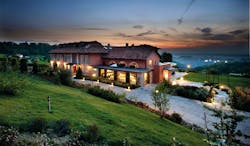
Relais Villa d'Amelia is a 4-star hotel amid beautiful countryside. Gastronomic cuisine, excellent spa and wellness facilities and immaculate gardens afford guests a truly relaxing and restorative retreat.
Superior double room
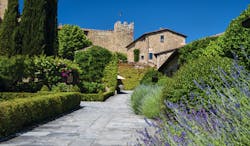
Castello Banfi Il Borgo is an exclusive luxury hotel in a sought-after wine region in Tuscany. The manicured gardens and luxurious views over vineyards and olive groves afford guests a truly secluded and tranquil retreat.
Deluxe double room
I just wanted to get in touch to say thank you! We have now returned from our Orient Express, Venice trip, and it could not have been better. The memories made will last a life time. Obviously, the train experience is beyond words and Venice is such a fantastic place, but we wanted to specifically thank you for the organisation and assistance. Your attention to detail is superb and it made everything smooth and easy. Thank you again for a job extremely well done.Mrs C, May, 2024
Holiday price guide Prices from about £3,140 per person based on two people sharing a double or a twin room.
Holiday Code ITFD12
Call us on 01392 441245
Vineyards of Barolo and Brunello luxury Italian fly-drive holiday
About Tuscany
An Expressions tailor-made holiday in Tuscany allows you to appreciate its classical landscape of rolling hills and vineyards dotted with olive and cypress trees, its misty green-grey mountains that are never too far distant, and hill-top towns of rich brown and gold stone houses. This combines with the beauty of the works of art contained in the towns and villages throughout Tuscany to create an inspirational union of the spirit and the senses. There is an intrinsic comfort in the supposed contrast between the delicacy of a Botticelli and the heartiness of Ribollita soup, yet both are typical of this fascinating region. As birthplace of the Renaissance, the impact of Tuscan and particularly Florentine traditions and culture on European heritage is fundamental to our way of life. In addition to the obvious attractions of the scenery of Chianti and the art cities of Florence and Siena, there are the less well-known regions south of Siena with its moon-like landscape of hills, the patchwork vineyards of Montalcino, the coastal marshlands of the Maremma, the spas of Montecatini and Saturnia, the islands of Elba and Giglio, and the Casentino with the source of the Arno and abundant mushroom crops. Wherever you travel on holiday in Tuscany, you will be inspired by the beauty of your surroundings and the way of life, which is quintessentially that of Italy too.
Highlights of Tuscany
Famous vineyards producing wines of Chianti Classico, Brunello di Montalcino, Vino Nobile di Montepulciano. Alabaster is produced in Volterra. Gold and silver are worked in Florence and the Ponte Vecchio is lined with jewellery shops. Marbled paper and stationery is a speciality of Florence. Ceramics and hand-painted majolica from raw terracotta from Impruneta to the glazed pottery of Siena are to be found throughout Tuscany. Lucca has traditionally produced silk and hand-woven fabrics. Leather goods including shoes, handbags and belts are to be found from market stalls to designer shops such as Gucci and Ferragamo. Interesting markets include the Mercato dell' Antiquariato which sells furniture from antiques to bric-a-brac in Arezzo on the first weekend of every month, in Pisa on the second weekend and in Lucca on the third weekend. The 'wild' Maremma is known for its long-horned white cattle and cowboys (butteri) and natural springs including Saturnia.
Cultural highlights of Tuscany
As birthplace of the Renaissance, Tuscany contains a wealth of treasures: Giotto`s Campanile and Brunelleschi`s Dome in Florence, the Tombs of Galileo and Michelangelo in Florence`s Santa Croce, Botticelli`s `Birth of Venus` and `Primavera` and the portraits of the Duke and Duchess of Urbino by Piero della Francesca in the Uffizi, Michelangelo`s `David` in the Accademia, the architecture of the Piazza della Signoria in Florence, `The Tuscan Maremma` painting by Giovanni Fattori in the Palazzo Pitti in Florence, the Piazza del Campo in Siena, `The Legend of the Cross` frescoes by Piero della Francesco in Arezzo, `The Creation` fresco by Bartolo di Fredi in the Collegiata in San Gimignano, Romanesque church of the Collegiata in San Quirico d`Orcia, 14th Century Fortezza of Montalcino, Renaissance masterpiece of the church of Madonna di San Biagio at Montepulciano, the abbey-church of Sant`Antimo, mediaeval Lucignano and the towers of San Gimignano, the Etruscan Museum in Cortona.
Festivals in Tuscany
Many of Tuscany`s festivals resound with the flamboyance of the Renaissance and keep Tuscans and visitors alike in touch with the region`s rich history. Others are linked to Tuscany`s hearty traditions of eating and drinking. The most famous is Siena`s Palio which takes place on 2 July and 16 August each year. Others include the Sagra del Tordo (Festival of the Thrush) in Montalcino on the last Sunday in October when there is an archery contest and charcoal-grilled thrush are a delicacy. In Florence, Calcio in Costume (a football match played in mediaeval costume) takes place in June. Pisa has the Giocco del Ponte (Game of the Bridge), a mock battle in Renaissance dress also held in June. Viareggio celebrates Carnival on Shrove Tuesday with a huge display of flamboyant floats. In May and August Massa Marittima holds the Falcon Contest.
Gastronomy in Tuscany
Simple country food is at the heart of Tuscan cooking. Regional dishes include Bruschetta (bread or ciabatta toasted and rubbed with garlic, olive oil and salt), Ribollita (bean, cabbage and bread soup), Pasta with hare or wild boar sauce, Porcini mushroom and truffle dishes, Bistecca all Fiorentina (thick cut of sirloin and fillet beef), Cantucci (almond and honey biscuits) served dipped in Vin Santo, Panforte (chocolate, nut and spice cake). Pecorino cheese made from sheep's milk. Local wines include the white Vernaccia di San Gimignano and the Bianco di Pitigliano. Famous reds include Chanti Classico, Brunello di Montalcino and the Vino Nobile di Montepulciano. Vin Santo made from semi-crushed grapes left for several months is an excellent dessert wine.
Call us on 01392 441245
Vineyards of Barolo and Brunello luxury Italian fly-drive holiday
About Piemonte
An Expressions tailor-made holiday to Piemonte beckons lovers of wine and food, art and architecture and dramatic, natural but also gloriously cultivated landscapes. Piemonte is essentially a country region of alpine peaks in the north, flat rice-producing river valleys further south, rolling vineyards with attractive villages, forested hills dotted with mediaeval castles and almost at its centre the city of Turin, known throughout the world as a great industrial centre but in fact, outstandingly rich in architectural gems, both modern and in particular Baroque. North of Turin is the Parco Nazionale del Gran Paradiso, with miles of unspoiled natural scenery of mountain peaks and meadows, of rare wildlife and flowers. The splendid palaces, parks and hunting lodges of the Princes of Savoy can be visited in the countryside near Turin on your holiday. Our Piemonte hotels are situated in the remarkable wine-producing regions of the Langhe and Asti, renowned for their beautiful scenery, magnificent wines and fine gastronomy.
Highlights of Piemonte
Turin, the regional capital, is a fascinating city of Baroque architecture and famous for its association with Fiat cars. Visit the car museum, the Mole Antonelli for a panoramic view. Visit some of the beautiful 18th Century House of Savoy palaces, many built by Filippo Juvarra, including Rivoli, Venaria Reale and Mandria. North of Turin is the subalpine region of Canavese with numerous castles many of which have been opened to the public very recently such as the Castello di Masino, now carefully restored. Lace is produced in the Valsesia. Alba is the centre of the white truffle and of course the local wines (Barolo, Barbera etc) should be tasted and purchased. Cuneo holds a market in the Piazza Galimberti every Tuesday.
Cultural highlights of Piemonte
Turin is laden with architectural treasures including the Palazzo Madama by Filippo Juvarra (now home to the Museo Civico d`Arte Antica which contains the 15th Century Portrait of an Unknown Man by Antonello da Messina), Guarini`s Palazzo Carignano, the Baroque buildings of the Piazza San Carlo.In Cuneo is the 18th Century Church of Santa Croce with a concave facade by Francesco Gallo. Vercelli had a school of art and its masterpieces can be seen in the Museo Civico Borgogna and in the Chuch of San Cristoforo are to be found frescoes and a 16th Century Madonna painted by Gaudenzio Ferrari. In the Palazzo Comunale of Alba is a painting of the Madonna and Child by the 16th Century artist Macrino d`Alba.The finest Romanesque buildings in Piemonte are to be found at the Abbey of Vezzolano at Albugnano.
Festivals in Piemonte
Many are linked to food and wine in this region. Asti holds an annual horse race in the Piazza del Campo del Palio, accompanied by mediaeval pageantry and coinciding with a local wine fair in September.
Gastronomy in Piemonte
Cuneo holds a cheese fair in November. Ivrea is famous for its Carnival celebrations including a Battle of Oranges. The region is renowed for its gastronomy and wine. Beef, cheese, butter, red wine, rice and truffles (particularly the white truffes of Alba) are all basic ingredients. Specialities include Manzo al Barolo (beef in red wine and garlic), Fonduta (hot dip of fontina cheese, milk, eggs, truffles and pepper), Bagna cauda (hot spicy sauce with garlic and anchovies), The wines of the region include Barolo, Barbaresco, Dolcetto.

